How We’re Working With The Trucking Industry
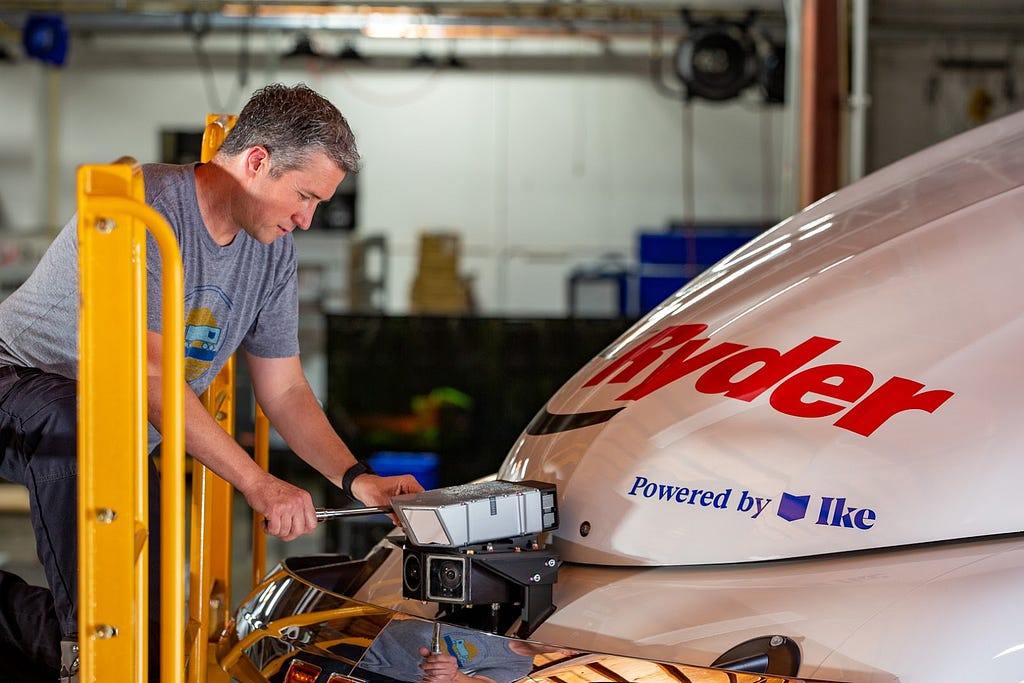
At Ike we are lucky to have an experienced team of engineers who have built many safety critical technologies, from motorcycles to farm equipment; product leaders who have worked in complex industries like energy and construction; business people with decades of experience in logistics and technology; and truck drivers who have crossed our country countless times. Our hard earned experience is a big advantage as we work to make trucks safer, truckers more valued, and trucking more productive with automation.
Our experience has also given us the confidence to take a very different path from the start. We founded Ike in 2018 to put people first, to walk the walk on safety, and to create a team with a more diverse perspective. We have made a lot of progress, but our experience tells us there’s a lot more to do, and that we can’t do it alone.
That’s why we are proud to announce our first customers, who have collectively reserved the first 1,000 trucks Ike will power with our automation technology. The fleets we are working with are among the largest and most sophisticated in the world. The agreements we have signed are an entirely new kind of collaboration for our industry, and will ensure that we build a safe, reliable, commercially valuable product — together.

Our first customers
The customers we are announcing today, Ryder, DHL, and NFI, have spent decades building massive logistics networks that support our economy. Their fleets of trucks and their many other products and services move everything we use across the United States every day. They are also early adopters of new technologies and have invested heavily in digital tools, electrification, and automation in many parts of their businesses.
That makes these fleets the ideal first customers for Ike. We have an opportunity to put a new technology directly in their hands and get the leverage of their own hard earned experience. We don’t need to build a big fleet or logistics network to get our product into the market — those networks already exist. And we’ve discovered that they have a lot to teach us.
How we’re working together
We think it’s important for Ike’s business to be efficient and focused. We want to apply our expertise in systems engineering, computer vision, and validation, and partner with other companies who are the best at other things. So we’ve set up our business model to focus on technology, and help fleets use their own strengths to get the most out of automation.
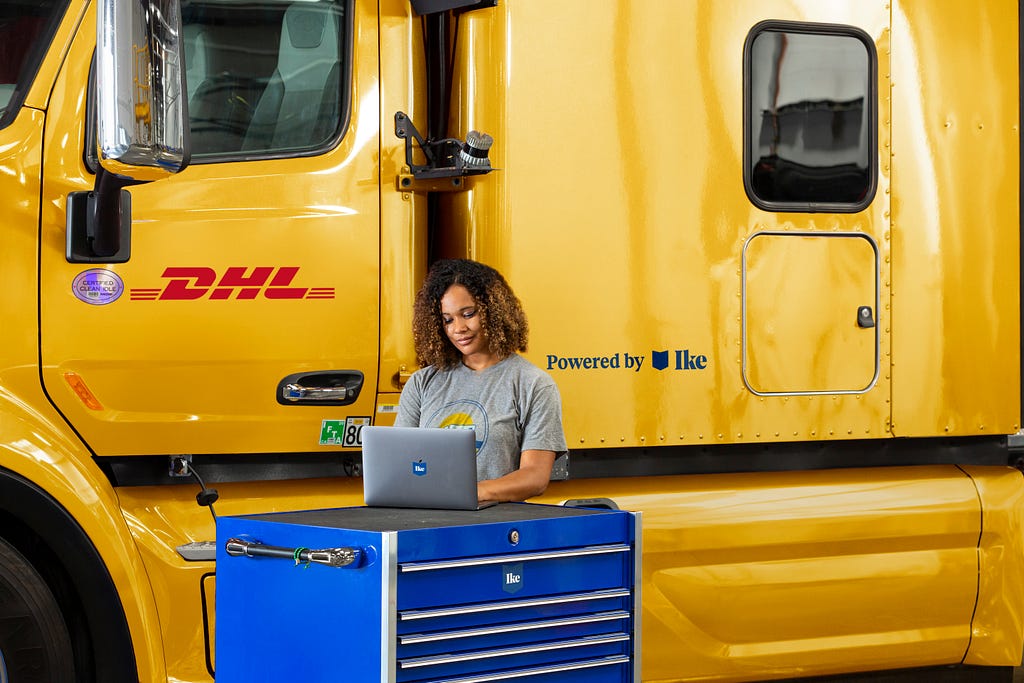
Ike’s product is a Software as a Service (SaaS) subscription to fleets. Our customers will buy trucks equipped with Ike’s validated automation system from our OEM manufacturing partners. Automated trucks will be owned and operated by fleets and “Powered by Ike.” This is a unique approach to automation, but it’s a model our customers are very familiar with. Telematics and other hardware-software products have been sold this way in the trucking industry for many years.
Of course, a commercially valuable solution needs more than just automation in the truck. Our customers will also access a bundle of support services to ensure that trucks powered by Ike have high uptime and can be used seamlessly in their networks. We’ll have more to share about how Ike is supporting deployment and operation through our subscription model in the near future.
Automated trucks powered by Ike will have new sensors, mechanical equipment, computing, and software that allows them to drive on the highway without a driver. Human-driven trucks from our customers’ fleets will move loads to and from the highway, handing off to their automated trucks for the long journey on the interstate.
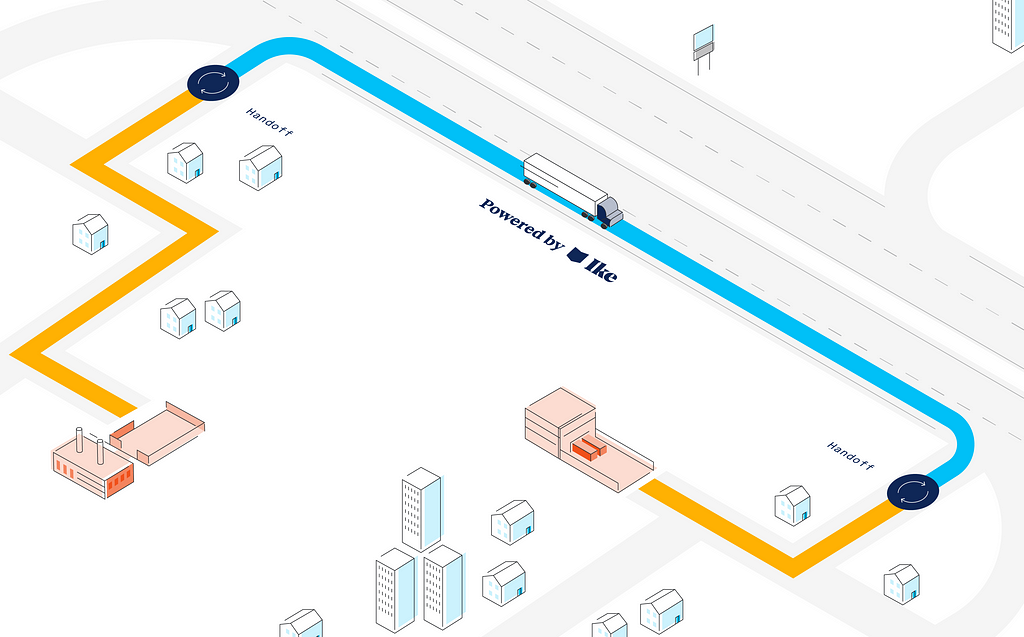
This approach has the potential to save lives, improve our customers’ operating margins, and keep their drivers closer to home. It also gives Ike the opportunity to be the high margin, asset light, technology-focused company we envisioned from the start. Ryder, DHL, NFI, and our other customers have helped validate our confidence in this business model, and we are looking forward to powering their fleets with technology that will create a significant competitive advantage.
Preparing for the future
Our agreements are about more than just adoption. We have much more to do before the first trucks powered by Ike are ready to head out on the road on their own. As we build our core technology, we are collaborating with our customers to understand their freight networks, operational models, and businesses. We are sharing information with each other about where and how to launch the first automated trucks. We are testing many pieces of our solution, getting feedback, and making sure what we are building will work for them. And our customers are learning how to be ready for what promises to be a big change for the logistics industry.
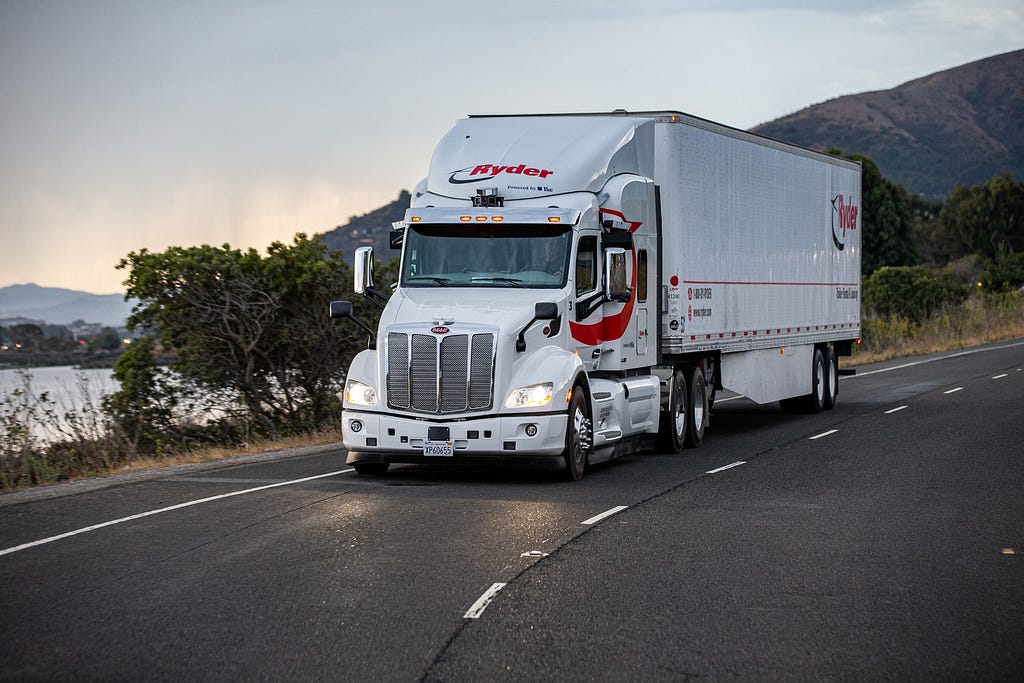
This has already proven to be incredibly valuable. We have been working with some of our customers since 2019, and have learned important lessons that we’d never get in a conference room in San Francisco, a test track, or transactional hauls out on the road. We are thankful to these fleets for sharing our vision, believing in Ike as the company to deliver, and embracing the opportunity to head down this new path together.
The road ahead
This year has been tough for many people. COVID-19 has shined a spotlight on the importance of trucking and truck drivers, who keep our economy running even in the worst of circumstances. Seeing first hand how our fleet customers have responded to the incredible challenges of 2020 has inspired us and given us even greater conviction about the importance of our mission and the potential for thoughtful automation that puts people first.
We are making great progress on our roadmap from our homes in the Bay Area and beyond. Our team is healthy and safe. Our unique technology advantage and investment in offline testing have proven even more valuable while working remotely. We will have much more to share about our progress when the time is right. For now, it’s time to get back to work.
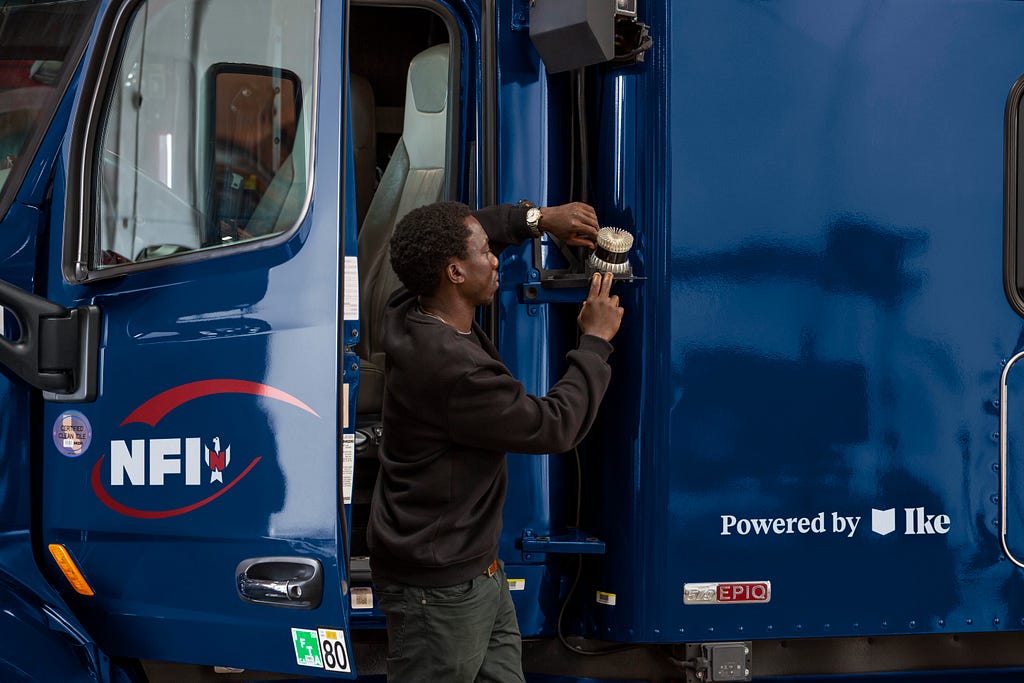
Powered by Ike was originally published in Ike Blog on Medium, where people are continuing the conversation by highlighting and responding to this story.